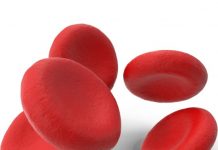With a great advancement in the field of multiple myeloma research, the survival rate has increased in myeloma patients.
Multiple myeloma is an incurable but effectively treatable disease with various treatment options.
How Multiple Myeloma develops?
Multiple myeloma (MM) is the cancer of the plasma cells in the bone marrow. Plasma cells produce antibodies to fight against foreign bodies. Multiple myeloma develops due to an uncontrolled growth of plasma cells in the bone marrow. It got its name because the tumor cells can develop in multiple bone marrow locations in the body.
It is estimated that, in the United States, about 15000 people are with multiple myeloma. It is slightly more common in men than in women.
Multiple Myeloma – Treatment Options
Treating myeloma is a complex process, as several conditions must be taken into consideration: patient’s overall health, other medical conditions, cancer status, previous cancer regimens, and its result.
Chemotherapy, stem cell transplantation, Thalomid (thalidomide), Velcade (bortezomib), and Zometa (zoledronic acid) are currently available treatment options for multiple myeloma.
Chemotherapy:
Chemotherapy is a drug therapy to kill cancer cells. The chemotherapy drugs are toxic to cancer cells and rapidly kill the cells or prevent the cells from dividing and forming new cells. The chemotherapy of multiple myeloma can include single or combination of drugs (intravenously or orally) to treat the cancer cells.
Conventional chemotherapy, High-dose chemotherapy with stem cell transplantation, and Salvage therapy are some forms of chemotherapy regimens that multiple myeloma patients can receive.
With chemotherapy, one can come across a decrease in blood cell counts, diarrhea, nausea, vomiting, and hair loss.
Stem Cell Transplantation:
It is a procedure that is used in multiple myeloma cancer treatment as a support for high-doses of chemotherapy. Although a higher dose of chemotherapy is effective in killing or preventing cell division, it also destroys other cells, such as blood-forming stem cells in the bone marrow.
As blood-forming cells are essential for the body, high-dose chemotherapy is always used along with stem transplantation, a procedure that restores the stem cells that were destroyed through high doses of chemotherapy.
A high-dose of chemotherapy and stem transplantation may result in mouth sores, nausea and vomiting, skin rash, diarrhea, and hair loss. The patients may be vulnerable to certain infections, bleeding and anemia.
Thalomid (thalidomide):
It is more powerful in treating myeloma when compared to conventional chemotherapy. It is an oral drug approved by Food and Drug Administration (FDA) to treat multiple myeloma.
It is highly active against multiple myeloma when used in combination with dexamethasone. These drugs prevent the growth of cancer cells by stopping the growth of blood vessels that develops cancer. Fatigue, constipation, sedation, neuropathy, peripheral edema and rash are some common effects of thalomid.
Velcade (bortezomib):
It is a new drug that acts different from chemotherapy. In United States, it is given for multiple myeloma patients who have undergone at least one therapy. Velcade in combination with doxil or dexamethasone is a new treatment for multiple myeloma approved by Food and Drug Administration (FDA). It improves the survival rate of myeloma patients who haven’t responded to at least one other therapy.
Decrease in platelet count, numbness or pain in the hands and feet are some of the effects of velcade that patients can come across.
New Findings On Multiple Myeloma
A new research on multiple myeloma at the Abramson Cancer Center of the University of Pennsylvania found that the drug combination – lenalidomide and steroid dexamethasone –improves the multiple myeloma condition effectively.
It has found that the use of a low dose of dexamethasone and lenalidomide (a derivative of thalidomide) increased the survival rate than a high-dose of dexamethasone.
With above treatment options, multiple myeloma can be treated effectively.













